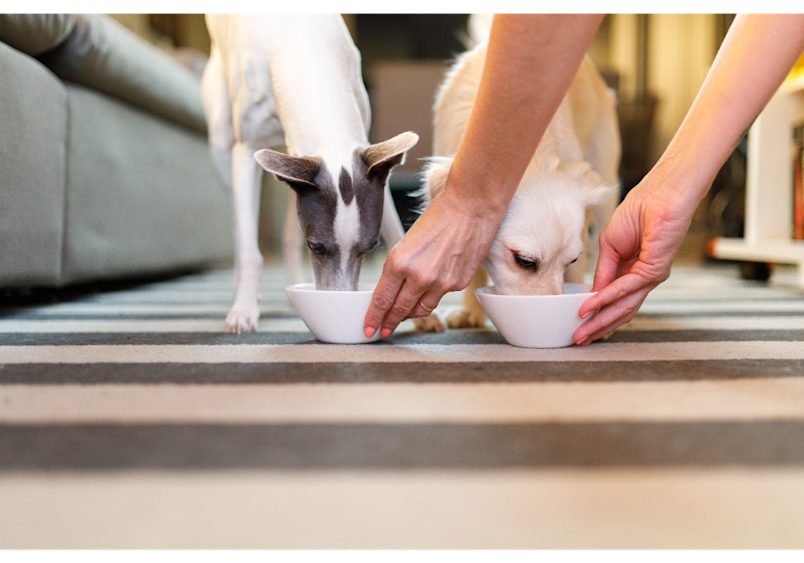
Are you thinking about switching up your dog's food? Maybe your vet suggested a new diet, or maybe you've just decided to try something new. One of the most important things you'll ever do for your dog's health is choose their food. The second is changing it the right way. It's not uncommon for pets to experience food allergies, upset stomachs, or other digestive issues when dietary changes happen too rapidly.
While cats are notoriously picky eaters, dogs can also have sensitive stomachs that require careful consideration when changing diets, food suppliers, or treats. Symptoms such as vomiting, diarrhea, or changes in stool quality often indicate that the transition is happening too quickly, making it important to approach any dietary changes thoughtfully to ensure your furry friend's health and happiness.
Changing Dog Food Trends Following New Nutritional Research
Recently, veterinary cardiologists took the unprecedented step of issuing a nutritional alert on behalf of dogs nationwide. This time, veterinarians are calling out the lack of taurine in some canine food brands.
Taurine, an amino sulfonic acid, is important for keeping the brain, eyes, and heart healthy. Research has revealed that insufficient taurine in grain-free diets might be responsible for certain diseases of the heart muscle in dogs. Given the critical role nutrition plays in canine health, many dog owners are now asking themselves whether it's time to switch to new dog food.
When Dog Food Transition Becomes Necessary
A dog's nutritional needs change over time. Being aware of these reasons can help you make the best decisions for your pup's health. Consider a diet change if your dog fits into one of these categories:
Life Stage Changes
Transitioning from puppy food to adult food is a common milestone. Knowing how to change puppy food carefully is important to avoid digestive problems. Senior dogs (typically 7+ years) may also benefit from age-appropriate formulas.
Health Conditions
Dogs with diabetes may require low-glycemic diets, while those with kidney disease benefit from low-phosphorus options. Always consult your veterinarian before making dietary changes for health-related reasons.
Gastrointestinal Sensitivity
Some dogs experience chronic stomach sensitivity. Switching to a diet with limited ingredients can help alleviate symptoms such as bloating, gas, or diarrhea.
Changes in Eating Habits
If your dog suddenly becomes a picky eater or seems to have lost their appetite, it could be a sign that their current food isn't satisfying them. A change to a more palatable food or different texture might be needed.
Pet Food Recalls
When a food brand is recalled due to safety concerns, it's often necessary to switch your dog's diet abruptly. Being prepared with a transition plan can help you handle these unexpected situations more smoothly.
Better Marketplace Options
The pet food market is always evolving. You might discover a new formula with higher-quality ingredients or one that better aligns with your budget or ethical choices, making a switch a proactive and positive choice.
Weight Management
If your dog needs to lose or gain weight, a specific diet is often the most effective tool. Switching to a weight-management formula can help your dog reach and maintain a healthy body condition.
Changing Dog Food Based on Type
With countless options available in today's pet food market, understanding the main categories can help you make an informed decision that supports your dog's health and fits your circumstances:
Commercial Diets offer convenience and AAFCO-certified nutrition, whether standard supermarket brands or super-premium pet store options.
Home-Prepared Meals allow you to control every ingredient but require careful planning to ensure nutritional balance.
Wet Food vs. Dry Food: wet food is easier to chew and often more palatable, while dry food tends to be more affordable and better for dental health.
When evaluating options, read pet food labels carefully. Look for AAFCO certification and note ingredients like protein sources.
Rotational Feeding Plans
Some pet parents like to change up foods more frequently to make sure their pup is getting everything they need. Rotational feeding involves switching between different types of food regularly to reduce the risk of nutrient deficiencies and food boredom, but this approach isn't suitable for all dogs, especially those with sensitive stomachs or food allergies who may struggle with frequent changes. Talk to your vet to see if your pup might benefit from rotational feeding.

The Proven Dog Food Transition Schedule
Regardless of whether you're starting a rotational feeding plan or simply switching your dog's food once, a gradual transition is key to preventing digestive upset. Here is a proven, week-long schedule that works for most dogs:
Days 1-2: Mix 25% new food with 75% old food
Days 3-4: Use a 50/50 ratio
Days 5-6: Mix 75% new food with 25% old food
Day 7: Transition fully to the new food
If your dog has a delicate stomach, extend this schedule to 10-14 days, as some dogs may even need a 3-week transition period for optimal comfort.
Quick Dog Food Transition Tips for Smoother Switches
In situations where a gradual transition isn't possible, such as food recalls or running out of your dog's regular food, try these strategies:
Feed smaller, more frequent meals every four to six hours rather than the usual two large meals. This approach reduces the digestive workload and allows your dog's system to process the new food more easily while you monitor for signs of trouble.
Use probiotics to help balance gut bacteria and reduce symptoms like diarrhea or gas by supporting healthy digestion during the adjustment period.
Add appealing meal toppers such as low-sodium bone broth or plain yogurt to entice picky eaters and make dry kibble more palatable while providing familiar flavors.
Maintain a consistent feeding schedule with regular mealtimes to help your dog's digestive system establish a routine and adjust more predictably to the new food.
Incorporate plain pumpkin to help minimize digestive upset during quick transitions due to its high fiber content and digestive-soothing properties.
Keep in mind that it typically takes 7-10 days for a dog's digestive enzymes and gut bacteria to fully adapt to new food, and some sensitive dogs may need even longer to show complete comfort with the change.
Warning Signs of Changing Dog Food Too Quickly
Despite taking precautions, changing dog food too quickly can still lead to adverse reactions that signal your pet's digestive system is struggling to adapt. These symptoms occur because sudden dietary changes disrupt the delicate balance of gut bacteria and overwhelm your dog's digestive enzymes, which need time to adjust to new ingredients and formulations:
Vomiting- Often the first sign of digestive distress, ranging from occasional regurgitation to frequent episodes that can lead to dehydration
Diarrhea - Loose, watery stools that may contain mucus or blood in severe cases, indicating intestinal inflammation and poor nutrient absorption
Loss of appetite - Your dog may refuse to eat due to nausea, stomach discomfort, or negative associations with the new food
Excessive gas or bloating- Uncomfortable abdominal distension caused by fermentation of undigested food particles and disrupted gut flora
Lethargy or behavioral changes - Decreased energy levels, irritability, or withdrawal from normal activities due to gastrointestinal discomfort and potential nutrient malabsorption
If your dog exhibits these symptoms, it may be a sign that the transition is happening too fast. Monitoring stool quality can help identify problems early. In severe cases, revert to the old food and consult your veterinarian.
Making Dog Food Transitions Easier with the Right Support
Even with a perfect plan, changing a dog’s diet can sometimes lead to unexpected issues. Digestive problems can persist, and new food allergies can develop. This is where having the right support can provide valuable peace of mind.
Pet insurance provides valuable financial protection. A sudden food allergy, severe gastrointestinal upset, or pancreatitis from a dietary change can lead to a surprise trip to the vet. These costs can add up quickly, but insurance can provide a vital safety net. Common costs for these issues can include:
Treating an upset stomach or minor diarrhea: $200 - $500
Diagnosing and treating a new food allergy: $200 - $400 for allergy testing alone, with ongoing medication costs.
Emergency visit for severe vomiting and diarrhea: $800 - $2,500, which can include diagnostics, IV fluids, and hospitalization.
Treatment for pancreatitis: $200 to over $1,000, depending on severity and hospitalization needs.
Additionally, adding an optional wellness plan can help you budget for routine nutritional consultations, preventive dietary management, and even prescription pet food. This could help you make proactive decisions about your dog's nutrition without making your budget the primary focus.

Changing Dog Food
Changing your dog's food doesn't have to be a stressful experience when you follow a gradual transition schedule, monitor for symptoms, and consult your veterinarian when needed to ensure your furry friend's health and happiness. Remember that every dog is unique, and what works for one may not work for another, so always prioritize your dog's individual needs and seek professional guidance when necessary.
Now that you have the tools—from the proven transition schedule to knowing what warning signs to look for—you can confidently tackle the second most important thing you'll ever do for your dog's health. Changing their food the right way doesn't have to be a source of stress. With a clear plan, you can ensure their journey to a new diet is a smooth one, turning a potentially difficult change into a positive step for their long-term health and happiness.